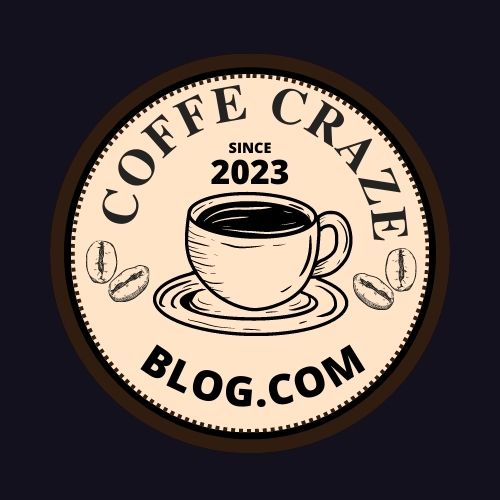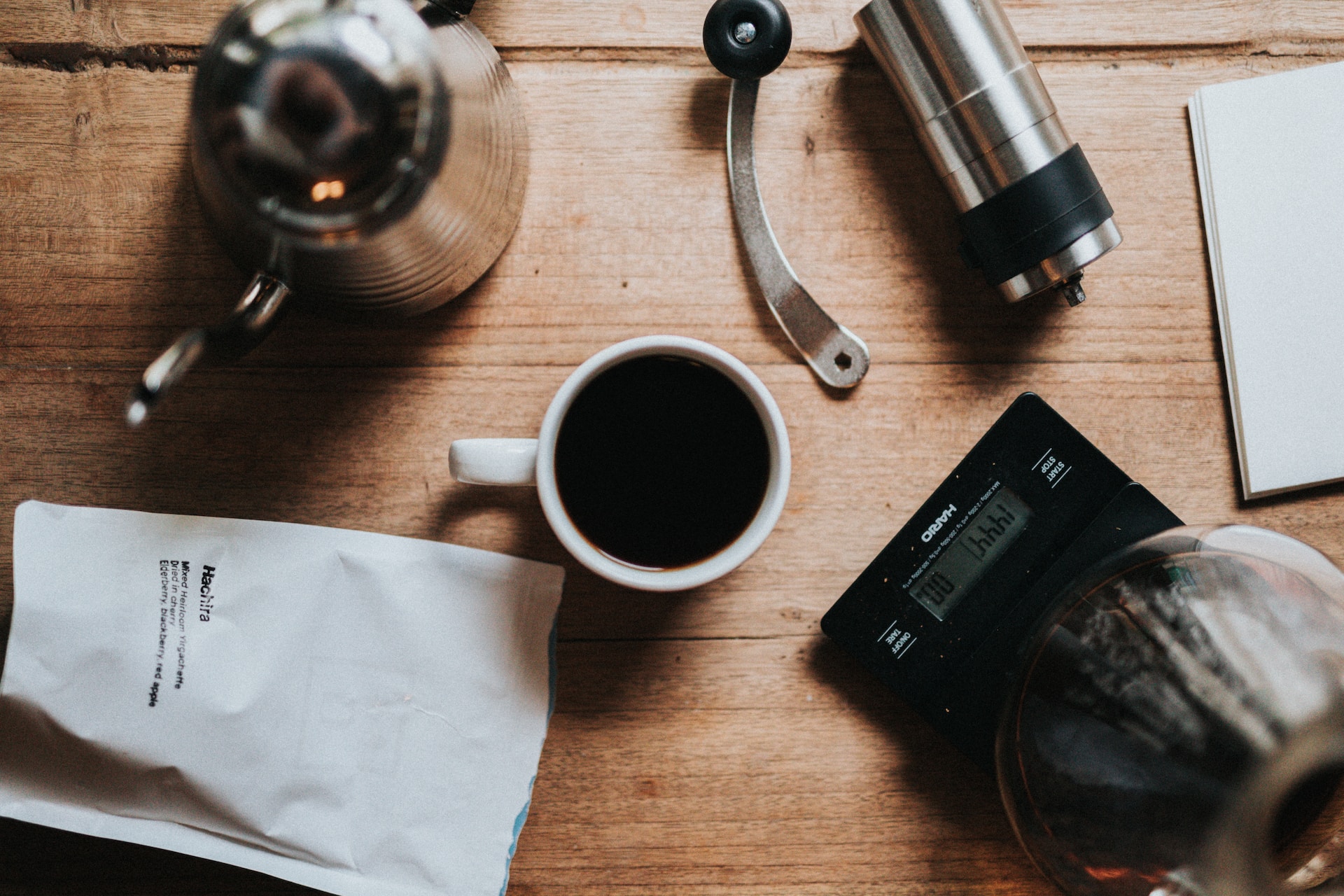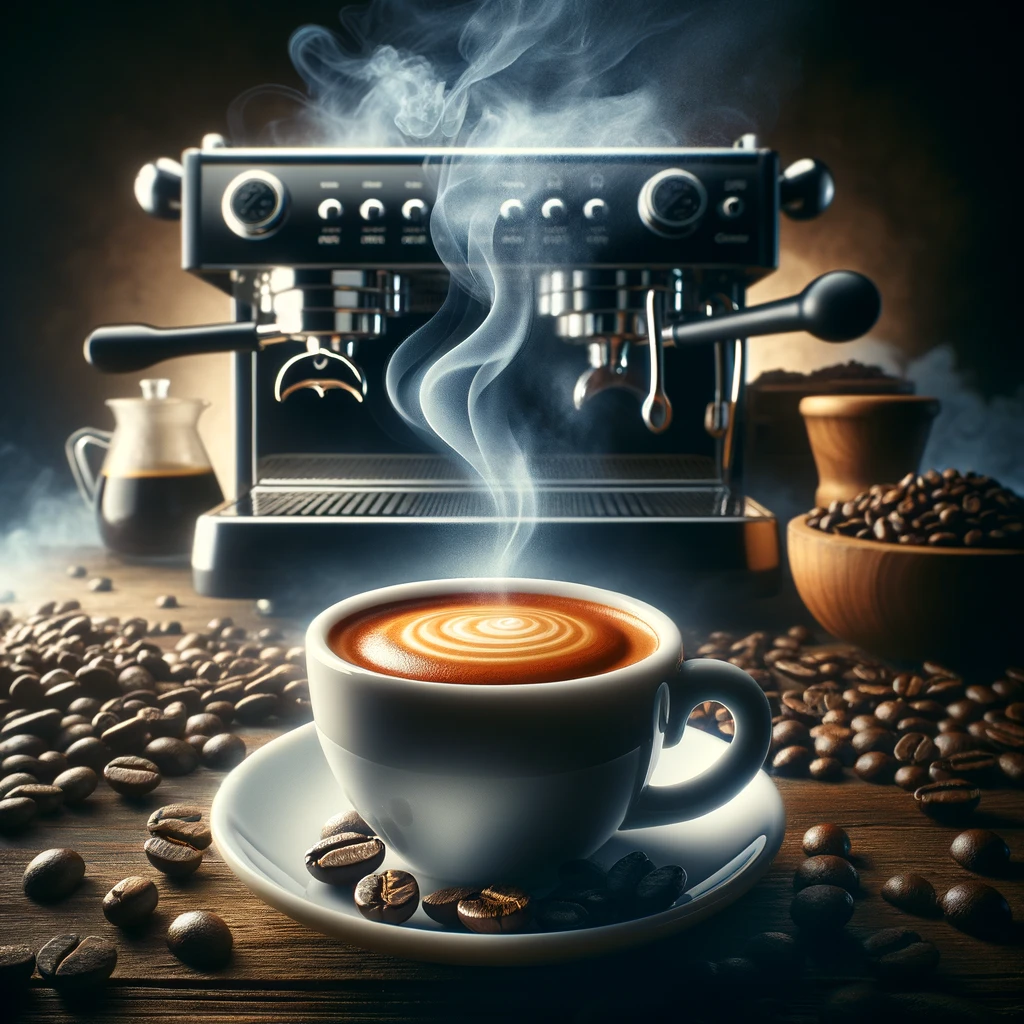This post may contains affiliate links which means I may receive a commission from purchases made through links. Learn more on my affiliate disclaimer.
Why Manual Coffee Brewing is Worth Exploring
Manual coffee brewing is a rewarding and fulfilling experience that allows you to have complete control over the taste and quality of your cup of coffee. Unlike automated machines, manual brewing methods require attentiveness, precision, and skill. By exploring manual coffee brewing, you open yourself up to a world of possibilities in terms of flavor profiles and brewing techniques.
One of the main reasons why manual coffee brewing is worth exploring is the ability to fully understand and appreciate the basics of coffee extraction. With manual methods such as pour-over or French press, you have direct contact with every step of the process – from grinding the beans to pouring hot water over them. This hands-on approach allows you to experiment with different variables like grind size, water temperature, and brew time to achieve your desired taste profile.
Moreover, manual coffee brewing requires minimal equipment compared to automatic machines. All you need are a few essential tools like a grinder, scale for measuring ingredients accurately, and a suitable brewer such as a Chemex or Aeropress. Investing in these basic pieces not only saves space in your kitchen but also gives you more freedom when it comes to choosing your preferred method.
In summary, manual coffee brewing offers an opportunity for true craftsmanship by allowing individuals to explore various techniques while appreciating each step involved in creating their perfect cup.
Understanding the Basics of Manual Coffee Brewing
When it comes to brewing coffee manually, there are a few key elements to keep in mind. First and foremost is the grind size. Different brewing methods require different grind sizes, so it’s important to have a grinder that allows for adjustable settings. Finer grinds are typically used for espresso or Aeropress, while coarser grinds work well with French press or pour-over methods.
Next, consider the water-to-coffee ratio. This refers to the amount of water used in relation to the amount of coffee grounds. The general rule of thumb is one part coffee to 15-18 parts water by weight. However, this can be adjusted based on personal preference and desired strength.
Lastly, pay attention to brew time and extraction. Brew time refers to how long hot water is in contact with the coffee grounds during brewing. Extraction refers to how much flavor is extracted from the beans into the final cup of coffee. Both factors greatly impact taste and should be monitored closely.
By understanding these basic principles of manual coffee brewing, you’ll be able to experiment with different techniques and perfect your own unique cup of joe without relying on automated machines or pre-packaged options.
Essential Equipment for Manual Coffee Brewing
When it comes to manual coffee brewing, having the right equipment is crucial for achieving a delicious cup of coffee. Here are three essential pieces of equipment that every manual brewer should have:
1. A Quality Coffee Grinder: One of the most important aspects of manual brewing is grinding your coffee beans just before brewing. This ensures maximum freshness and flavor in each cup. Invest in a high-quality burr grinder, which provides consistent grind size and allows you to adjust the coarseness based on your brewing method.
2. Brewing Device: There are various types of brewing devices available for manual coffee brewing, such as pour-over drippers, French presses, or AeroPress. Each device offers a unique way to extract flavors from the coffee grounds. Choose one that suits your preferences and experiment with different methods to find your favorite.
3. Gooseneck Kettle: A gooseneck kettle is designed with a long spout that provides better control over water flow during pouring. This precision pouring helps evenly saturate the coffee grounds and ensures optimal extraction. Look for kettles with temperature control options so you can achieve the perfect water temperature for brewing.
By investing in these essential pieces of equipment, you’ll be well-equipped to explore the world of manual coffee brewing and unlock its full potential in terms of flavor and aroma.
- A Quality Coffee Grinder: Investing in a high-quality burr grinder ensures maximum freshness and flavor in each cup by allowing you to grind your coffee beans just before brewing.
- Brewing Device: Choose from various types of brewing devices such as pour-over drippers, French presses, or AeroPress to extract flavors from the coffee grounds according to your preferences.
- Gooseneck Kettle: A gooseneck kettle with a long spout provides better control over water flow during pouring, ensuring even saturation of the coffee grounds for optimal extraction. Look for kettles with temperature control options for achieving the perfect water temperature for brewing.
Step-by-Step Guide to Grinding Coffee Beans for Manual Brewing
Grinding coffee beans is an essential step in the manual brewing process, as it directly affects the flavor and aroma of your cup of coffee. Here is a step-by-step guide to help you achieve the perfect grind for your manual brewing method.
First, start by selecting the right grinder. For manual brewing, a burr grinder is highly recommended over a blade grinder. Burr grinders provide more consistent and uniform grounds, which are crucial for achieving optimal extraction. Set your grinder to the appropriate coarseness level based on your preferred brewing method.
Next, measure out the desired amount of whole coffee beans based on your chosen ratio. It’s generally recommended to use a scale for precise measurements rather than relying on volume alone. This ensures consistency in each brew and allows you to adjust according to personal taste preferences.
Now it’s time to grind! Place the measured coffee beans into the hopper or chamber of your grinder and secure it tightly. Start grinding at a steady pace, making sure not to rush or force-feed the beans through too quickly. The ideal grind should have a texture similar to coarse sand or sea salt.
Remember that freshly ground coffee is best used immediately after grinding as it starts losing its flavors and aromas shortly after exposure to air. By following this step-by-step guide, you’ll be able to unlock rich flavors and experience an exceptional cup of manually brewed coffee every time without any fuss or confusion
The Art of Measuring Coffee and Water Ratios
Measuring coffee and water ratios is a crucial aspect of manual brewing. Getting the right balance between these two elements can greatly impact the taste and quality of your coffee. To achieve the perfect cup, it’s important to understand the art of measuring coffee and water ratios.
When it comes to measuring coffee, using a scale is highly recommended. Eyeballing or relying on scoops can lead to inconsistency in flavor. By weighing your coffee grounds, you ensure accuracy and consistency in each brew. The general guideline is to use a ratio of 1:16, which means one part coffee to sixteen parts water. However, this ratio can be adjusted based on personal preference.
The next step is determining how much water to use for your desired strength of coffee. If you prefer a stronger brew, decrease the amount of water used; if you prefer a milder taste, increase the amount of water accordingly. Experimenting with different ratios will help you find your ideal balance between bitterness and acidity.
By mastering the art of measuring coffee and water ratios, you have greater control over the flavor profile of your brews. Whether it’s adjusting for strength or experimenting with different beans, understanding this fundamental aspect allows you to create personalized cups that cater specifically to your taste preferences without relying solely on guesswork
Mastering Different Manual Brewing Methods
Different manual brewing methods offer unique ways to extract flavors from coffee beans, allowing you to customize your brew according to your preferences. One popular method is the pour-over technique, which involves pouring hot water over coffee grounds in a filter cone. This method allows for precise control over water flow and extraction time, resulting in a clean and flavorful cup of coffee.
Another manual brewing method worth exploring is the French press. This method involves steeping coarsely ground coffee in hot water for several minutes before pressing down a plunger to separate the grounds from the liquid. The French press produces a full-bodied and rich cup of coffee with minimal sediment.
For those looking for convenience without compromising on taste, the Aeropress is an excellent choice. This compact device uses air pressure to force water through finely ground coffee, resulting in a quick yet flavorful brew. Its versatility allows for experimentation with different grind sizes and brewing techniques.
By mastering different manual brewing methods like pour-over, French press, and Aeropress, you can elevate your home brewing experience and create delicious cups of coffee tailored to your liking. Each method offers its own set of advantages and nuances that can enhance the flavor profile of your brews. So go ahead and explore these methods to discover new dimensions of taste in every sip!
Exploring Different Types of Coffee Beans for Manual Brewing
When it comes to manual coffee brewing, the type of coffee beans you choose can greatly impact the flavor and aroma of your cup. There are numerous varieties of coffee beans available, each with its own unique characteristics and taste profiles. By exploring different types of coffee beans, you can discover new flavors and enhance your brewing experience.
One popular type of coffee bean is Arabica. Known for its delicate flavors and smoothness, Arabica beans are often considered to be higher quality than other varieties. They tend to have a sweeter taste with notes of fruit or chocolate. Another common type is Robusta, which has a stronger and more bitter flavor profile. Robusta beans also contain a higher caffeine content compared to Arabica.
In addition to these two main types, there are also various specialty coffees available from different regions around the world. For example, Ethiopian coffees are known for their fruity and floral notes, while Colombian coffees often have a well-balanced flavor with hints of caramel or nuttiness. Exploring different types of coffee beans allows you to experiment with diverse flavors and find your personal favorites that complement your preferred brewing method.
Remember that the freshness of the beans is crucial in achieving optimal results when manually brewing coffee. It’s recommended to purchase whole bean coffee rather than pre-ground options as this allows you to grind them just before brewing for maximum flavor extraction. Additionally, storing your beans properly in an airtight container away from light and moisture will help maintain their freshness over time.
By taking the time to explore different types of coffee beans for manual brewing, you can elevate your daily cup into an exciting sensory experience filled with rich flavors and aromas that cater specifically to your preferences.
Tips for Achieving the Perfect Water Temperature
1. Start with fresh, cold water: When brewing coffee manually, it’s crucial to begin with fresh, cold water. Using tap water that has been sitting in the kettle or pot can affect the taste of your coffee. Fresh water ensures a clean and pure flavor profile.
2. Invest in a thermometer: To achieve the perfect water temperature for manual coffee brewing, it is recommended to use a thermometer. Different brewing methods require different temperatures, so having an accurate reading will help you achieve optimal results. Generally, most manual brewers recommend a range between 195°F (90°C) and 205°F (96°C).
3. Preheat your equipment: Before adding hot water to your brewer or vessel, make sure to preheat it by rinsing it with hot water first. This helps maintain consistent heat throughout the brewing process and prevents any sudden drops in temperature when adding the grounds.
By following these tips for achieving the perfect water temperature during manual coffee brewing, you can enhance your overall coffee experience and ensure that each cup is brewed to perfection without any unwanted flavors or inconsistencies.
The Importance of Brew Time and Extraction
Brew time and extraction are two crucial factors in manual coffee brewing that greatly impact the taste and quality of the final cup. The brew time refers to the duration for which water comes into contact with coffee grounds during the brewing process, while extraction refers to how effectively the desirable flavors and compounds are extracted from the beans.
The importance of brew time lies in achieving optimal flavor extraction. Brewing coffee for too short a period may result in under-extraction, leading to a weak and sour-tasting cup. Conversely, over-extraction can occur when coffee is brewed for too long, resulting in bitterness and an unpleasant aftertaste. Finding the right balance between these extremes is key to obtaining a well-rounded and flavorful brew.
Extraction plays a vital role as it determines which flavors are drawn out from the coffee grounds. Different compounds within coffee beans extract at different rates depending on variables such as grind size, water temperature, and agitation during brewing. By controlling these factors along with brew time, you can customize your brew’s flavor profile – whether you prefer bright acidity or rich chocolatey notes.
In summary, understanding the importance of brew time and extraction allows you to fine-tune your manual brewing technique for consistently delicious cups of coffee. Experimenting with different variables will help you discover your preferred flavor profiles while ensuring that each sip brings out the best qualities of your chosen beans.
Troubleshooting Common Manual Brewing Challenges
Troubleshooting Common Manual Brewing Challenges
1. Uneven Extraction: One common challenge in manual coffee brewing is achieving an even extraction. This occurs when some parts of the coffee grounds are over-extracted, resulting in a bitter taste, while other parts are under-extracted, leading to a weak and sour brew. To troubleshoot this issue, ensure that you have a consistent grind size by using a high-quality burr grinder. Additionally, make sure to evenly distribute the water during the brewing process by using techniques such as blooming and stirring.
2. Slow Drip Time: Another challenge that may arise is slow drip time during pour-over or drip brewing methods. This can be frustrating as it prolongs the overall brewing process and may result in an over-extracted cup of coffee. To address this issue, check if your coffee grounds are too fine or if there is any blockage in your filter or dripper. Adjusting these factors can help improve the flow rate and achieve optimal extraction.
3. Weak Flavor Profile: If you find that your manually brewed coffee lacks depth or flavor intensity, it could be due to inadequate water temperature or improper ratios of coffee to water. Ensure that your water temperature falls within the recommended range for brewing (between 195°F and 205°F) to extract maximum flavor from the beans. Additionally, experiment with different ratios of coffee to water until you find one that suits your taste preferences.
By troubleshooting these common challenges in manual coffee brewing, you can enhance your skills and ultimately enjoy a delicious cup of joe every time without any hiccups along the way.
Frequently Asked Questions
Why should I explore manual coffee brewing?
Manual coffee brewing allows for more control over the brewing process, resulting in a more personalized and flavorful cup of coffee. It also allows you to experiment with different brewing methods and coffee beans to find your perfect cup.
What are the basics of manual coffee brewing?
Manual coffee brewing involves grinding coffee beans, measuring coffee and water ratios, and using various brewing methods such as pour-over, French press, or AeroPress. It requires attention to detail and a willingness to experiment to achieve the desired flavor profile.
What equipment do I need for manual coffee brewing?
Essential equipment for manual coffee brewing includes a good quality grinder, a scale for accurate measurements, a kettle for heating water to the desired temperature, and the appropriate brewing equipment depending on your preferred method.
How do I grind coffee beans for manual brewing?
For manual brewing, the grind size should match the brewing method. Generally, pour-over methods require a medium-fine grind, French press requires a coarse grind, and AeroPress requires a medium grind. Invest in a good grinder and adjust the grind size accordingly.
What is the importance of measuring coffee and water ratios?
Measuring coffee and water ratios accurately is crucial for achieving a balanced and flavorful cup of coffee. The ideal ratio depends on personal preference, but a common starting point is a ratio of 1:15 (coffee to water) for pour-over methods.
How can I master different manual brewing methods?
Mastering different manual brewing methods requires practice and experimentation. Start by understanding the specific steps and techniques for each method, then adjust variables such as grind size, water temperature, and brew time to find the best results for your taste preferences.
Can I use different types of coffee beans for manual brewing?
Yes, different types of coffee beans can be used for manual brewing. Experiment with different origins, roast levels, and flavor profiles to find your preferred taste. Specialty coffee beans tend to offer a wider range of flavors and complexities.
What is the perfect water temperature for manual brewing?
The perfect water temperature for manual brewing varies depending on the brewing method. Generally, a temperature between 195-205°F (90-96°C) is recommended. Invest in a kettle with temperature control or use a thermometer to ensure accuracy.
How important is brew time and extraction in manual brewing?
Brew time and extraction play a crucial role in the flavor of your coffee. Under-extraction can result in a weak and sour taste, while over-extraction can lead to bitterness. It is important to find the right balance by adjusting variables such as grind size, brew time, and water temperature.
What are some common challenges in manual coffee brewing and how can I troubleshoot them?
Common challenges in manual coffee brewing include inconsistent extraction, uneven extraction, and over-extraction. To troubleshoot these issues, ensure your grind size is appropriate for the brewing method, use a scale for accurate measurements, adjust variables such as brew time and water temperature, and experiment with different techniques until you achieve the desired flavor.
Conclusion
In conclusion, the world of manual coffee brewing offers a rewarding journey for newcomers and coffee enthusiasts alike. This blog post has highlighted the reasons why manual coffee brewing is worth exploring, emphasizing the control it provides over flavor and quality. The ability to grasp the basics of coffee extraction, coupled with the minimal equipment required, makes manual brewing an attractive option.
Understanding key elements such as grind size, coffee-to-water ratios, and brew time is essential for achieving the perfect cup. This knowledge empowers individuals to tailor their coffee to their preferences and experiment with various techniques.
The right equipment, including a quality coffee grinder, a suitable brewing device, and a gooseneck kettle, is indispensable for manual coffee brewing. Investing in these essentials ensures that you can unlock the full potential of flavor and aroma in each cup.
Grinding coffee beans correctly is a fundamental step, and this guide has outlined the steps for achieving the perfect grind. The importance of measuring coffee and water ratios has also been stressed, as it allows for consistency and customization in every brew.
Mastering different manual brewing methods, such as pour-over, French press, and AeroPress, opens up a world of possibilities for coffee lovers to experiment with various flavors and brewing techniques.
Exploring different types of coffee beans is another exciting aspect of manual brewing, enabling enthusiasts to discover unique flavor profiles and create a tailored coffee experience.
The importance of maintaining the perfect water temperature during brewing has been highlighted, along with practical tips for achieving it.
Finally, understanding brew time and extraction is crucial for consistently producing delicious cups of coffee. Troubleshooting common challenges in manual coffee brewing, such as uneven extraction or slow drip time, ensures that you can overcome obstacles and enjoy your brew without any hiccups.
In essence, manual coffee brewing is not just a method; it’s an art and a craft. By delving into this world, you can elevate your coffee experience to new heights, savoring the joy of creating your perfect cup of joe with each brew.





